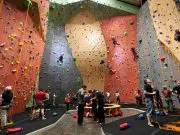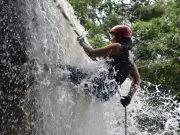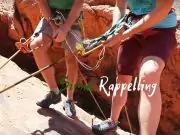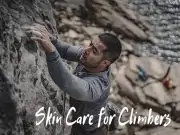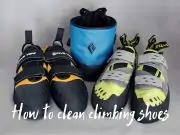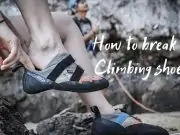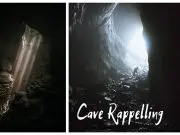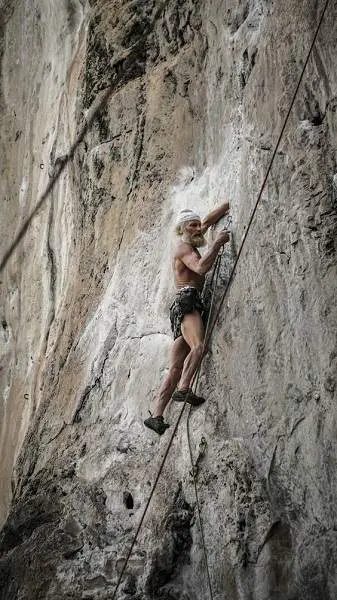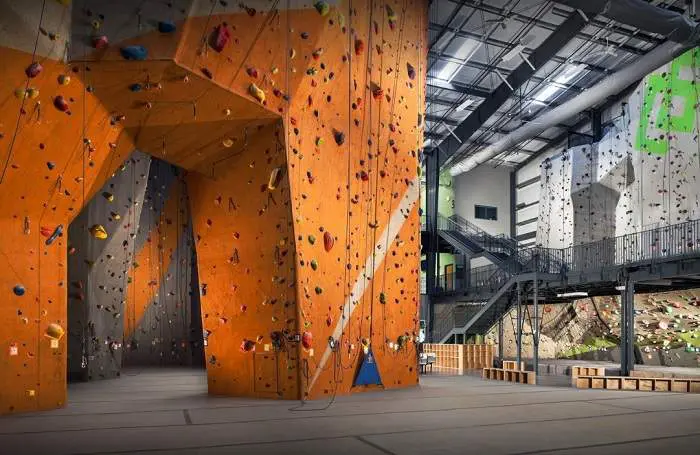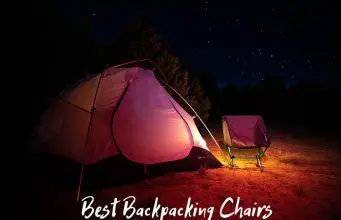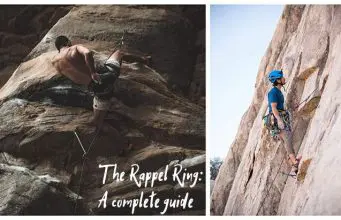Is there an age limit to climbing or rappelling?
It seems that another question that pops into my readers’ heads a lot is: am I too old to start rappelling or am I too old to start climbing? These are valid questions to be sure, but it’s one thing to ask yourself this if you’re 60 and another to question your prowess if you’re 30. My honest opinion is that there’s no such thing as an age limit when it comes to climbing and rappelling. There is such a thing as common sense, though.
Let me elaborate: rappelling and climbing are both harsh on the body, that’s pretty much common knowledge. But it’s important to remember that these activities can take a toll on the mind as well. Expert climbers have been climbing and rappelling for years at a time, and sometimes even they don’t feel like they own the situation completely when they’re up there.
That being said, depending on your own physical prowess and state of mind, you might be able to start off rappelling and climbing at an advanced age. The trick is that you need to start practicing in order to figure out if you’re up to the task or not. I have some ideas in mind that will help you figure out if you’re too old to start climbing/rappelling. If you ask me, though, you’re definitely not too old, you just don’t know where to start. By reading this, you’ve already taken the first step.
Obviously, there are medical conditions that might prevent you from climbing, in which case I wouldn’t even recommend trying. Even if you don’t have a condition, it’s never a bad idea to get a routine physical before committing to this.
Young climbers have some advantages. But you can get around that.
You just need to invest more time in your preparation. Keep in mind that younger climbers are usually stronger and more flexible when compared to seniors. They also recover from injuries faster, and they require less time to warm up. This puts them at an advantage, true, but this isn’t a competition.
You need to make sure that your body is ready for the climb ahead by stretching and going for short jogs before starting out. You can also perform some short climbs beforehand, as they help your body prepare for what’s to come. When you get sore (because you will), take a few days off to let your body recover. You’ll come back stronger and more confident, but never skip your warm-up routine no matter how good you feel.
Keep in mind that you’re a beginner.
It’s good to be eager, but there’s such a thing as being too eager. If you ask me, I’m confident that you can become good at climbing and rappelling if you’re in good health and not too overweight. Age only comes into question if you’re pushing 70, but even then, I’m not one to discourage you if you’d like to give it a try.
The thing is, you’ll likely make some mistakes as you’re starting out, and that’s only natural. Learning from these mistakes is key, and making sure that you don’t repeat them is even more important. However, when you do mess up, make sure it’s not too bad as to seriously injure yourself. There’s nothing more discouraging than a fracture or a serious cut when you’re just starting out.
Getting injured early can put you in a bad frame of mind, and it can even make you doubt yourself or think less of yourself. Go easy, know your limits and just get to learn the ropes. You’ll get a chance to push those limits later as you become more confident. Rappelling is a journey, and it is not for the faint of heart. You’ve picked a tough activity to try out for the first time in your golden years. You’re brave, I’ll give you that, and I have nothing but admiration for you, but please take note of my advice and start out slow.
Trust others but rely on your own strength.
Back in the day, it was like this: you climbed because you had a passion for it, and you rappelled because you had to or because you wanted to save time. In our modern days, gear has become so dependable that pretty much anyone can perform these activities just for the fun of it. If you’ve always been a thrill-seeker and you just never got around to trying out rock climbing and rappelling until now, your age shouldn’t discourage you.
Do it with friends, or under the strict supervision of a professional. Try short descends at first and see how you like it before moving on to the more challenging stuff. There are plenty of experienced guides out there who would understand the unique physical and mental challenges that seniors go through during these activities.
If you’re a bit on the old side and a beginner at that, you’ll likely need constant supervision, and there’s nothing wrong with that. Don’t be afraid to ask for help or to ask questions. There are entire climbing communities that you can join both online and in the real world.
Know what you want: to become a climber or just to enjoy the ride.
It’s important to know why you want to do this in the first place. Are you just looking for a short thrill or do you actually want to become a climber? There’s no wrong answer here, mind you. There’s nothing wrong with enjoying a bit of fun on the rocks, but if you truly want to become a climber, there are things that you need to learn, and courses to take. You might even consider hiring a guide.
Hiring a professional guide to take you on a climbing trip is a great way to get you started. However, make sure to tell him exactly what your expectations are for this trip. Many will agree to keep an eye out for you as you climb, and they’ll make sure that you reach the top safely. They’ll climb alongside you, and they’ll guide you every step of the way.
However, if you want to learn how to become a climber in the true sense of the word, they’ll let you know from the start that you need to invest time and money into your newfound “hobby.” This is true for everyone no matter their age, but since you’re probably a bit older than most climbers, you’ll need some extra lessons, some sturdier gear, and maybe some physical training and testing beforehand. This is where belaying and rappelling come into play as well: they’re often regarded as advanced climbing techniques that aren’t taught to casual climbers.
Remember what I said before about rappelling being practiced only when needed? Not all climbers know how to rappel, and not all of them need to. If you want to be self-sufficient, though, you need to learn how to do it and do it right.
Start out at indoor climbing gyms.
The absolute best way to start off on your climbing journey, even if you’re in your fifties or sixties, is to get a membership at an indoor climbing gym. Some of these gyms even have rappelling towers, so you get to learn to rappel as well while you’re out there. Most of the time, people will be helpful and kind, and you’ll always have a staff member nearby to guide you or help you.
I’ve previously put together a list of some of the best climbing gyms in the US, so maybe you can check it out if you’re looking to get a membership. The best part about these gyms is that they rent out gear. You don’t have to invest in rappelling and climbing gear if you just want to test yourself and see if you can handle the challenges. Find a climbing gym, get a day pass, grab some gear and see what you’re made of!
Bring some friends along.
Rappelling and climbing can be intimidating. It’s admirable that you’re willing to try them out at all, especially if you’re older, but having friends and family around can make things a lot easier. Friends will give you the boost you need to push your limits. Even a pat on the back or a “you got this” can make all the difference in the world when you’re trying new things.
Find a friend or two that are willing to come along and try this with you. Or maybe bring a family member, someone who’s into this sort of thing. If all else fails, going alone is not the end of the world. It’s just better when you can share new experiences with loved ones. It creates bonds and memories.
Conclusion.
So to answer your question: are you too old to start rappelling and climbing? Probably not. All you need to do is be in relatively good health: have decent fitness and a good cardiovascular condition. If you’re in your 30s, just go for it, same if you’re in your 40s even. If you’re pushing 50 or 60 I’d advise caution, but it’s definitely doable if you’re in decent shape.
If you’ve been enjoying an active life, this will come easy for you. It’s just another thing to learn, another thing to get good at. And you will get good at it if you keep doing it, no matter your age. It’s just human nature.
I’ve always said that it’s a good idea to start climbing young, but not necessarily because older people can’t do it. It’s just that you have more time to refine your skills. If you have plenty of free time on your hands, learning how to climb and rappel are both great ways to keep in shape in your senior years. Just make sure that you wear proper gear at all times, and don’t push yourself too hard, especially at the beginning.
If you are a senior climber or you started out climbing and rappelling at an older age, I’d love to hear your thoughts on the matter.


